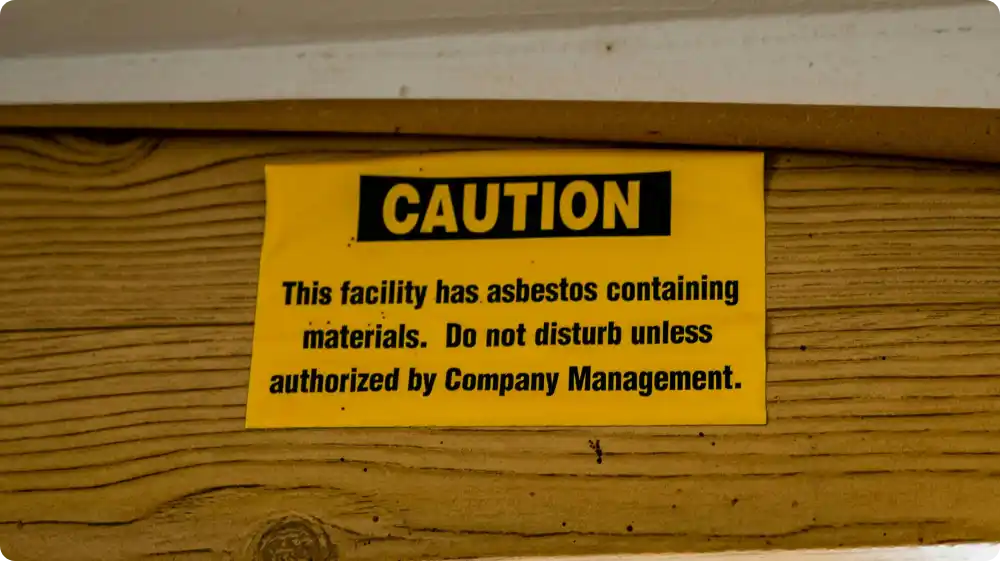
Asbestos was once widely used in construction for its strength, fire resistance, and affordability. But today, it is recognised as a serious health hazard, linked to life-threatening conditions such as mesothelioma and asbestosis. Because asbestos fibres are invisible to the naked eye, identifying materials that may contain them isn’t always straightforward; knowing how to spot asbestos is essential for protecting yourself and others.
If your property was built before the year 2000, there’s a chance it may contain asbestos. From textured coatings and insulation boards to old vinyl floor tiles, asbestos was widely used in everyday building materials. But what does asbestos look like, and how can you tell if it’s present in your home?
This article explains the typical signs, colours, and locations of asbestos so you can make informed decisions and seek professional help when needed. Whether you’re a homeowner renovating an older property or a worker in construction and maintenance, understanding these warning signs can help you take the proper precautions before disturbing any material that may contain asbestos.
What Is Asbestos and Why Is It Dangerous?
Asbestos is a naturally occurring mineral that was once highly valued for its exceptional durability, heat resistance, and insulating properties. In the UK, it was widely used in construction and manufacturing from the 1950s through the 1980s. Commonly added to insulation, ceiling boards, flooring, and roofing products, asbestos seemed like a miracle material at the time. However, by the late 20th century, its severe health risks became undeniable. The use of asbestos was finally banned in the UK in 1999, but many older homes and buildings still contain asbestos-containing materials (ACMs).
Why Asbestos Exposure Is Harmful to Health
The real danger of asbestos lies in its microscopic fibres. When asbestos-containing materials are damaged, cut, or disturbed, they release these fibres into the air. Once inhaled, the fibres can lodge deep within the lungs and remain there for years. Over time, this can lead to severe, often fatal conditions such as:
- Asbestosis: Scarring of the lungs, resulting in breathing difficulties.
- Mesothelioma: A rare but aggressive cancer affecting the lining of the lungs or abdomen.
- Lung cancer: Often linked to asbestos exposure, especially in smokers.
Unlike some hazards, asbestos-related illnesses may take decades to develop, which is why prevention and early awareness are crucial.
Why Identification Is Essential for Safety
Because asbestos fibres are invisible to the naked eye, you cannot tell by looking alone whether a material contains asbestos. Yet identifying potential asbestos in homes and workplaces is the first step to staying safe. Knowing the risks allows you to:
- Avoid disturbing asbestos-containing materials.
- Take proper precautions before starting renovation or demolition work.
- Call in licensed professionals to test and manage suspected asbestos.
Understanding what asbestos is and why it’s dangerous lays the foundation for learning how to spot it in everyday materials, which we’ll explore in the next section.
What Does Asbestos Look Like? Key Signs to Recognise It
Asbestos itself is made up of fine fibres that are invisible to the naked eye, so you cannot always tell if a material contains asbestos just by looking. Instead, asbestos was mixed into many everyday building products. Asbestos-containing materials (ACMs) can look like ordinary plasterboard, tiles, or insulation. Common examples include:
- Textured ceiling coatings (such as Artex)
- Flat insulation boards
- Old floor tiles and adhesives
- Sprayed coatings on ceilings, beams, or walls
Because asbestos is often combined with cement, resin, or other substances, it can resemble ordinary plasterboard, tiles, or insulation. Age, paint, and damage can also make it harder to distinguish asbestos-containing products from safer alternatives. This means that even trained professionals cannot confirm the presence of asbestos simply by looking at it.
The only reliable way to identify asbestos is through laboratory testing carried out by a licensed asbestos surveyor. If you suspect a material might contain asbestos, you should never cut, sand, or drill into it, as this is what releases dangerous fibres into the air. Instead, a professional can safely collect samples for analysis and confirm whether asbestos is present. Knowing what asbestos materials typically look like can help you stay alert; however, testing is the only definitive way to confirm their presence.
Importance of Professional Testing for Confirmation
If you suspect a material contains asbestos, never attempt to cut, sand, or drill it to check. Disturbing asbestos is what makes it dangerous. Instead:
- Contact a licensed asbestos surveyor who can safely take samples.
- Laboratory analysis under a microscope is necessary to confirm the presence of asbestos.
- Do not rely solely on visual checks, as they can be misleading and unsafe.
Knowing what asbestos might look like can help you stay alert; however, testing by a professional is the only definitive way to confirm its presence.
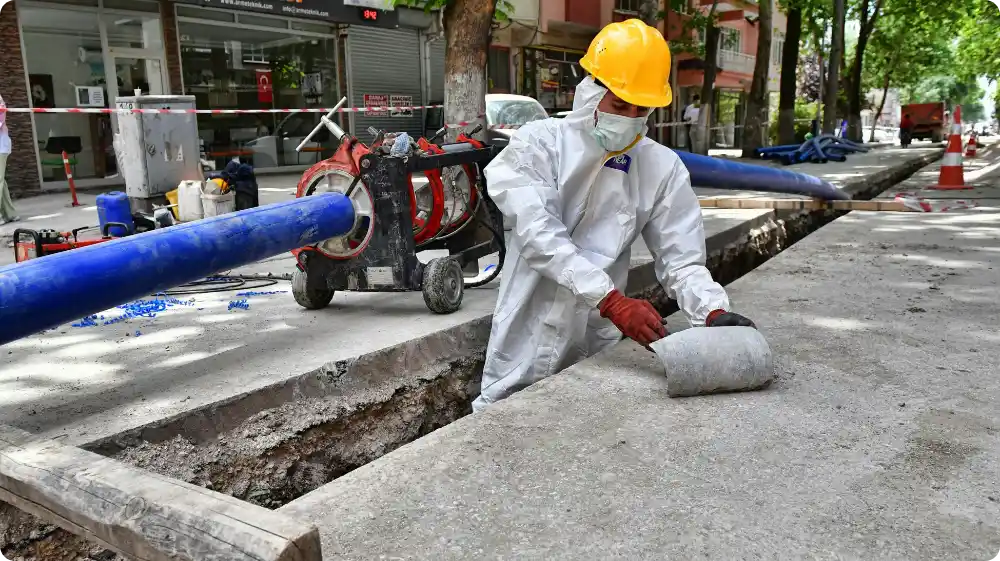
The Colours of Asbestos: White, Brown and Blue
Although these colours were once used to distinguish asbestos types, in practice, asbestos fibres are not always visible, and products may not show a clear “colour.” The safest way to confirm the presence of asbestos is always through professional testing.
White Asbestos (Chrysotile): The Most Common Form
White asbestos, also called chrysotile, was the most widely used type in the UK. It was added to roofing sheets, floor tiles, insulation, and textured coatings because of its flexibility and heat resistance. White asbestos fibres are long and curly, which makes them easier to weave into building materials. While considered less hazardous than other types, chrysotile is still extremely dangerous when its fibres become airborne and inhaled.
Brown Asbestos (Amosite): Common in Insulation Boards
Brown asbestos, also known as amosite, was most commonly used in asbestos insulation boards (AIBs), ceiling tiles, thermal insulation, and cement sheets. Its fibres are straighter and more brittle compared to chrysotile. Amosite was particularly strong and heat-resistant, which made it a popular choice for fireproofing. However, it poses a serious risk to health and has been linked to lung cancer and mesothelioma.
Blue Asbestos (Crocidolite): The Most Hazardous Type
Blue asbestos, known as crocidolite, is widely regarded as the most dangerous form. Its thin, needle-like fibres are sharp and can easily penetrate lung tissue once inhaled. Crocidolite was used in sprayed coatings, pipe lagging, and certain cement products, although it was less common than white and brown asbestos. Due to its extreme health risks, it has been strongly associated with aggressive forms of mesothelioma.
Stay Safe with Hurak’s Most Popular Health & Safety Courses
Hurak offers a wide range of accredited training designed to keep you safe, ensure compliance, and help you build a successful career in health and safety.
Asbestos Awareness & Safety
Working at Height
Workplace Safety
Common Locations Where Asbestos May Be Found
Asbestos was used in a wide range of building products, so it can still be present in many older properties. The table below highlights some of the most common locations and materials where asbestos may be found.
Location / Material | Examples of Asbestos Use | Risk Level |
Insulation and Pipe Lagging | Pipe insulation, boiler lagging, and sprayed insulation on ducts and beams | High – fibres release easily if disturbed |
Floor Tiles and Roofing Sheets | Vinyl floor tiles, tile adhesives, corrugated cement roofing sheets (garages, sheds, factories) | Medium – fibres released if broken or drilled |
Plasterboard and Coatings | Asbestos plasterboard, partition walls, textured coatings such as Artex, and ceiling tiles | Medium – disturbance during sanding/drilling is dangerous |
Boilers and Heating Systems | Asbestos blankets around boilers, insulation boards in heating systems | High – older boilers often had friable asbestos |
Ceilings and Garage Panels | Suspended ceiling tiles in offices/schools, cement garage panels and outbuilding walls | Medium – common in prefabricated buildings |
How to Spot Asbestos in Homes and Buildings
Spotting asbestos isn’t always straightforward, as asbestos fibres are microscopic and cannot be seen with the naked eye. Instead, look for clues in the age of the property and the types of materials present. Homes and buildings constructed before the year 2000 are the most likely to contain asbestos, particularly if they haven’t been refurbished since.
In residential properties, asbestos was often used in textured ceiling coatings, such as Artex, old vinyl floor tiles, and the black adhesive beneath them. It was also used in insulation boards around fireplaces or in loft spaces, as well as in corrugated cement sheets on garage roofs. In commercial buildings such as schools, factories, and offices, asbestos was commonly found in suspended ceiling tiles, pipe insulation in plant rooms, sprayed coatings on structural beams, and cement panels used for fireproofing.
A helpful indicator is the age of the property. Buildings erected before 1985 have a high likelihood of containing asbestos, while those built between 1985 and 1999 may still contain asbestos in certain materials. Properties built after 2000 should be asbestos-free, as the use of asbestos was entirely banned in the UK by then.
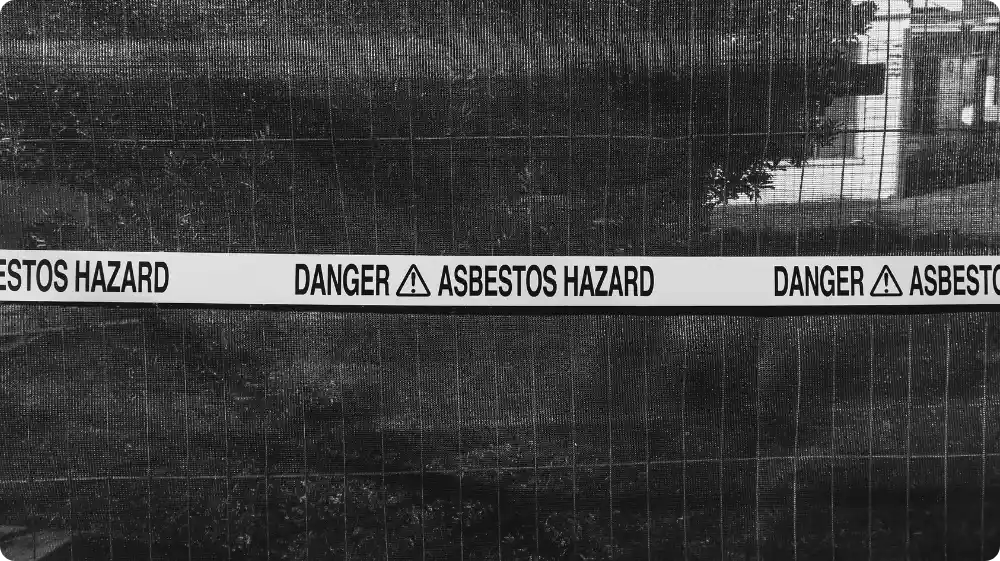
How to Identify Asbestos Safely (Without Disturbing It)
Identifying asbestos safely means recognising the materials that may contain it without physically touching, cutting, or disturbing them. Asbestos is only dangerous when its fibres are released into the air, so visual awareness and caution are key. If you believe a material could contain asbestos, it’s vital to keep it intact and avoid drilling, sanding, or breaking it.
Safe Steps to Identify Potential Asbestos
- Consider the property’s age: Buildings constructed before 2000 are more likely to contain asbestos, particularly if they haven’t undergone renovation.
- Check common materials: Items such as old vinyl floor tiles, textured coatings, cement sheets, insulation boards, and pipe lagging are frequent sources of asbestos.
- Avoid disturbance: Do not scrape, cut, or damage any suspected material, as this is when fibres are released.
- Rely on professionals: A licensed asbestos surveyor can safely collect samples and confirm the presence of asbestos through laboratory testing.
Tip: You cannot identify asbestos with certainty by sight alone. While awareness of typical signs and locations is proper, the only safe and reliable method is to have a professional asbestos survey carried out.
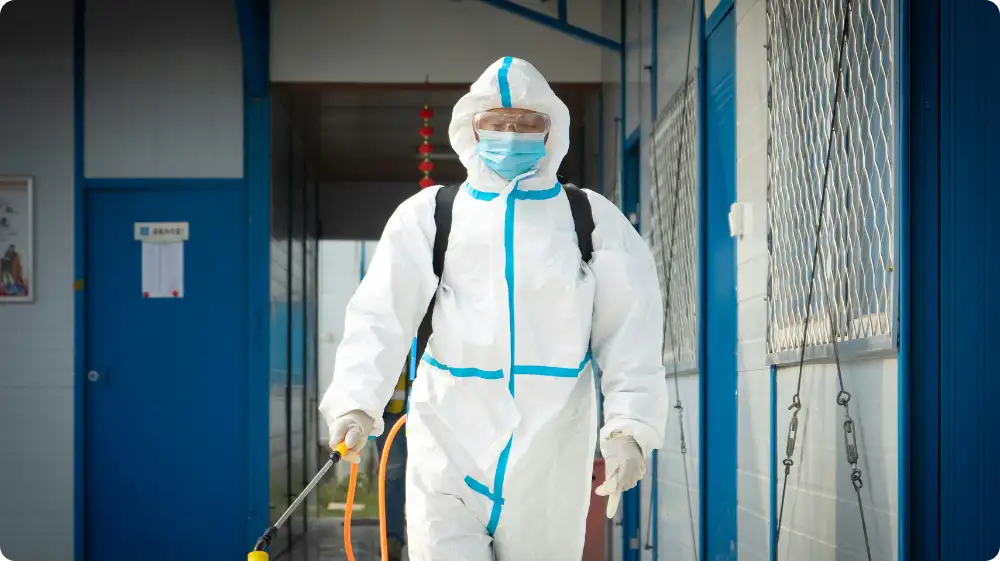
When to Call a Professional for Asbestos Testing
Asbestos can’t be confirmed by sight alone, as asbestos fibres are microscopic and many asbestos-containing materials (ACMs) look like standard building products. While recognising the signs of asbestos is useful, the only safe and reliable way to confirm it is through professional testing.
Why You Need a Licensed Asbestos Surveyor
A licensed asbestos surveyor has the expertise and equipment to take samples safely without releasing harmful fibres into the air. These samples are sent to UKAS-accredited laboratories, where tests determine not only whether asbestos is present but also the type, which can be white, brown, or blue. Surveyors also provide detailed reports and guidance on the next steps, whether that means leaving the material undisturbed or planning safe removal.
If you suspect asbestos in your home, office, or workplace, the rule is simple: don’t try to test it yourself. Always call a professional to ensure the material is handled safely and in line with UK regulations.
Strengthen Your Health & Safety Knowledge with CITB Training
Identifying asbestos is only part of maintaining a safe site. To manage wider health and safety risks and meet legal requirements, construction professionals need accredited training. Hurak’s CITB Site Safety Plus courses are designed to give you the skills to recognise hazards, carry out risk assessments, and maintain safe working environments.
Popular CITB-accredited courses include:
- CITB Health and Safety Awareness (HSA): Ideal for newcomers learning to identify hazards such as asbestos.
- CITB SMSTS: Site Management Safety Training Scheme: Essential for managers overseeing asbestos and other on-site risks.
- CITB SMSTS Refresher Course: Update your knowledge and stay compliant with current safety standards.
- CITB SSSTS: Site Supervisor Safety Training Scheme: Train supervisors to identify and control hazards on site.
- CITB SSSTS Refresher Course: Refresh your certification and strengthen your approach to workplace safety.
Protect your team, stay compliant, and advance your career with Hurak’s accredited CITB training.
What To Do If You Suspect Asbestos
Finding a material you think may contain asbestos can be worrying, but the most important thing is not to panic and not to disturb it. Asbestos is only dangerous when its fibres are released into the air; therefore, the safest approach is to leave the material as it is until a professional assessment can be carried out.
Immediate Steps to Take
- Stop work immediately: Whether you’re renovating, drilling, or repairing, put tools down and avoid touching the material.
- Keep the area clear: Restrict access to prevent others from being exposed to potential fibres.
- Avoid sweeping or vacuuming: This can spread fibres further.
- Seek professional advice: Contact a licensed asbestos surveyor to arrange for testing.
If asbestos is confirmed, you’ll be advised whether it can be safely left in place (managed and undisturbed) or if removal is required. Employers also have a legal duty under UK health and safety law to protect staff from asbestos exposure in the workplace, which means arranging surveys and risk assessments where asbestos is suspected.
Training in asbestos awareness and safe working practices can also help you recognise potential risks early and take appropriate precautions.
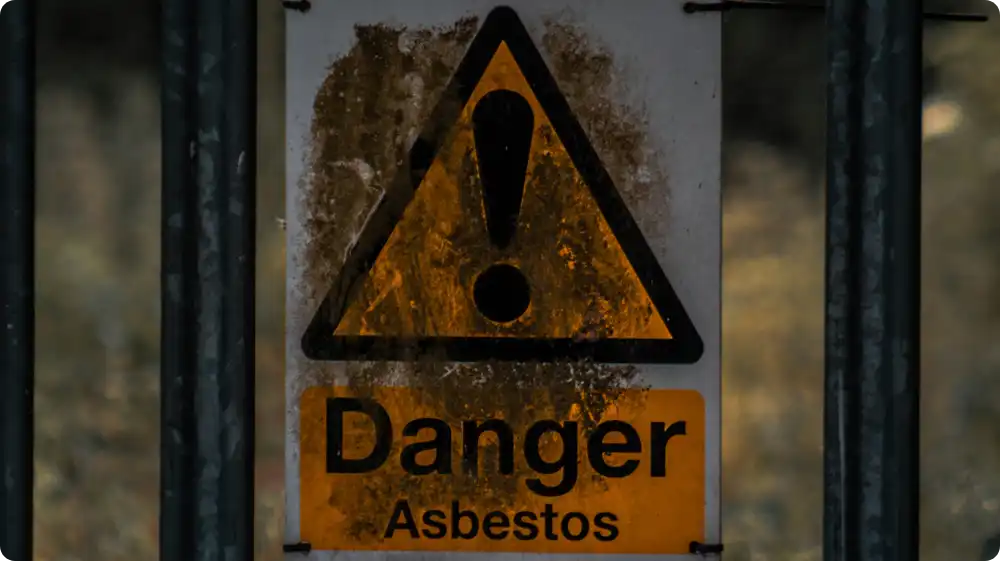
Frequently Asked Questions
What does asbestos look like?
Asbestos is made of tiny fibres and is often mixed with other materials. It can appear fibrous, rough, or even smooth, depending on where it’s used, like in tiles, cement, or insulation. You can’t confirm it by sight alone.
What does white asbestos look like?
White asbestos (chrysotile) has curly white or grey fibres and was often used in roof sheets, pipe insulation, and vinyl tiles. It’s common in older homes and the least dangerous, but still harmful if disturbed.
What does brown asbestos look like?
Brown asbestos (amosite) has straight, brown fibres and was widely used in ceiling tiles, insulating boards, and cement panels. It’s more hazardous than white asbestos due to its sharp, needle-like fibres.
What colour is crocidolite asbestos?
Crocidolite, or blue asbestos, has thin, blue fibres and was often used in pipe lagging and spray-on insulation. It’s the most dangerous form of asbestos due to its delicate fibres and high friability.
What does asbestos insulation look like?
It often appears fluffy, crumbly, or dusty, especially around pipes, boilers, or lofts. Older sprayed coatings or lagging materials may also contain it and become a hazard when they deteriorate.
What does asbestos tile look like?
Asbestos tiles are usually 9×9 or 12×12 inches, dull in colour, and often dark grey or brown. They become dangerous when cracked, brittle, or during removal.
How to spot asbestos in walls or ceilings?
Look for textured coatings, fireproof panels, or old ceiling tiles in buildings built before 2000. Visual checks aren’t reliable, though — lab testing is the only way to confirm.
What should I do if I suspect asbestos?
Stop work immediately, inform a supervisor, and seal off the area. Only licensed professionals should inspect or remove suspected materials.
Is asbestos still a problem in the UK?
Yes. It’s still present in many pre-2000 buildings despite being banned. Anyone working in construction or renovation must be aware of the associated risks.
Who needs asbestos awareness training?
Anyone working in construction, maintenance, or demolition. Hurak’s Asbestos Awareness Course covers identification, safety, and your legal responsibilities.
Conclusion: Spotting and Identifying Asbestos
Asbestos remains one of the most significant health hazards in older homes and workplaces across the UK. While you can look for warning signs such as the age of the property, specific materials, and common locations, it’s essential to remember that asbestos cannot be confirmed by sight alone.
The safest way to identify asbestos is by hiring a licensed asbestos surveyor, who can test samples in accredited laboratories and advise whether the materials can be managed or removed. For homeowners, this means protecting your family; for employers, it’s a legal responsibility to safeguard your staff with courses such as Level 2 Health and Safety in the Workplace
By staying alert to the signs, colours, and locations of asbestos, and by relying on professionals for testing, you can reduce risks and make informed decisions about managing it safely.





